How To Get Rid Of Snakes In My Wall Garden
Snakes: they're scaly, legless, and probably not an animal you want to share your backyard with.
Unfortunately, the things that make your backyard a pleasant place for you (shade, pretty landscaping, and maybe a bit of natural water) can also attract snakes.
If you're wondering how to get rid of snakes on your property, you're not alone. Here at Smith's Pest Management, our team helps get rid of snakes on Bay Area properties each day, so we know how to send the pests packing humanely and safely.
In this post, we're sharing a few of our top tips for getting rid of snakes and keeping your backyard snake-free all summer and beyond.
Let's dive in.
Here are the major snake species that invade homes and yards in California:
Gopher Snake
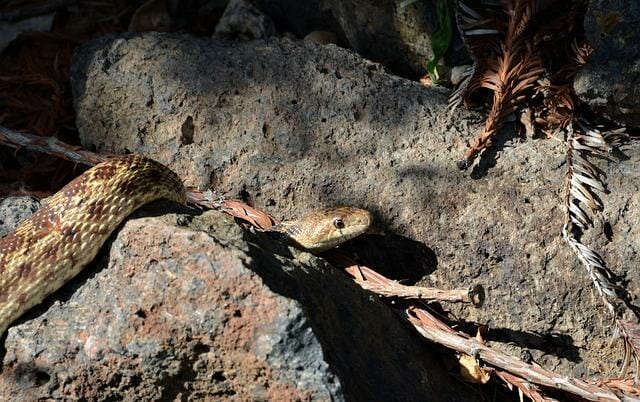
Gopher snakes are the most common species of snakes in Northern California. Often mistaken for rattlesnakes, gopher snakes have gray or dark brown bodies with alternating black and brown spots.
These snakes are diurnal, which means they hunt during the day and sleep at night. When threatened, the snake will do its best imitation of a rattlesnake – flattening its body and shaking its tail.
Gopher snakes are nonvenomous and not dangerous to humans. They eat small mammals and birds and their eggs.
Garter Snakes
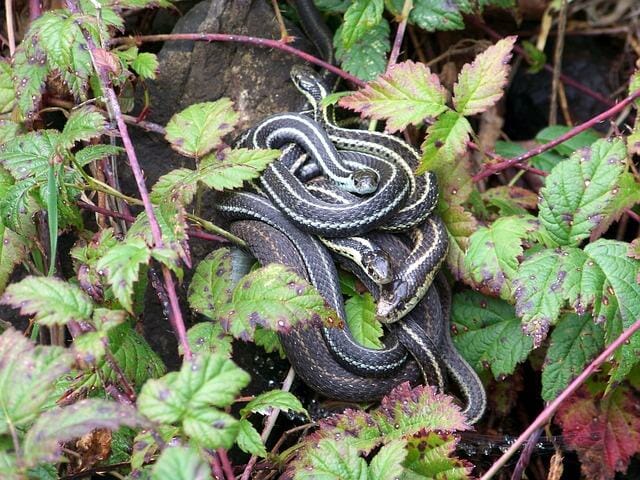
Garter snakes are common across North America. These snakes have three stripes that run the length of their bodies. Their heads are arrowhead-shaped and larger than their necks. They can reach 54" in length.
Like gopher snakes, black snakes, and cottonmouth snakes, they eat small mammals, birds and their eggs, and insects.
Rat Snakes
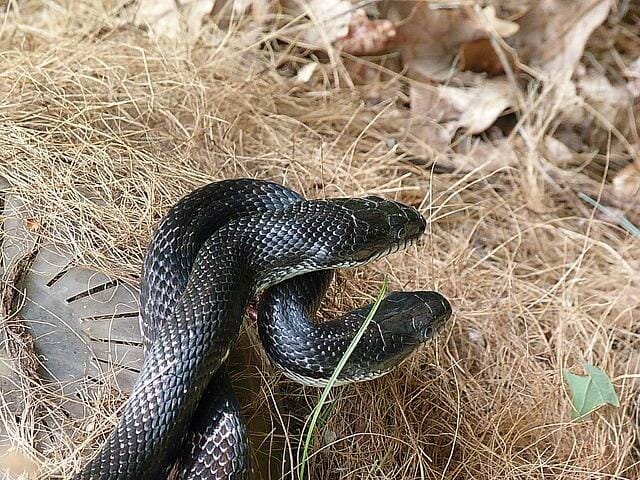
Rat snakes are very similar to garter snakes. They vary in color and pattern but typically have dark bodies with light chins and underbellies. Rat snakes are skilled swimmers and climbers, and they tend to frequent areas with plenty of trees and water.
Kingsnakes
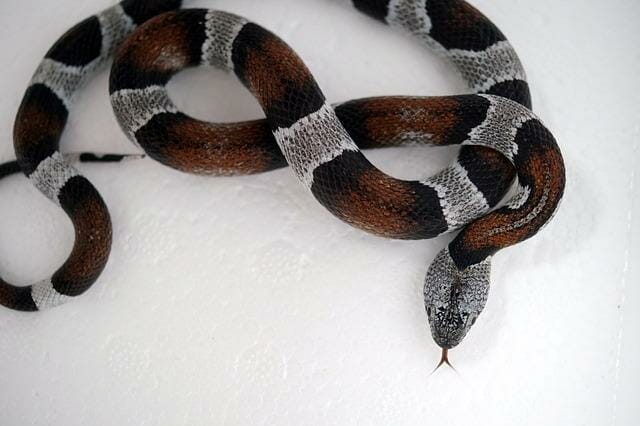
Kingsnakes are medium-sized, nonvenomous snakes that kill their prey by constricting it.
Because they have bands of color down their backs, they are frequently confused with venomous species like coral snakes. They can grow to be 36-48" in length. They survive on a diet of lizards, rodents, birds, and turtle eggs.
Rattlesnakes

While nobody wants to share a garden or home with snakes, gopher snakes, garter snakes, rat snakes, and kingsnakes are all non-venomous and not a threat to humans. The rattlesnake, however, is a different story.
Pacific rattlesnakes, the most common type in Northern California, have a triangular head and can reach a length of 5.5 feet, with body colors ranging from dark gray to black, speckled with hexagonal markings.
When surprised or threatened, rattlesnakes will coil their bodies and rattle their tails fiercely. Pacific rattlesnakes are most active in the spring and summer months and hibernate from about November to February.
Differentiating Venomous and Poisonous Snakes
Because snakes vary so widely in appearance, it can be difficult to identify snakes accurately. With that in mind, here are some quick ways to determine whether you have a venomous or nonvenomous snake in your yard:
Venomous Snakes
- Triangular heads (although some nonvenomous snakes adopt this appearance to intimidate predators)
- Thin, vertical pupils in yellow or green eyes
- Color varies widely
Nonvenomous Snakes
- Rounded or spoon-shaped heads
- Rounded pupils
- Color varies widely
If you think you may have a poisonous snake in your home or yard and you live in the San Francisco Bay Area, contact Smith's Pest Management immediately.
Our experienced snake control team will remove the snake humanely, keeping you, your family, and your pets safe.
What Attracts Snakes to My House?
Snakes, like all pests, are seeking two things when they enter your space: food and shelter.
As a general rule, snakes will hang around if they can find favorite sources of prey, including:
- Rats
- Mice
- Moles
- Fish
- Frogs
- Small farm animals
- Slugs
- Snails
- Grasshoppers
Snakes will also seek shelter to breed, hunt, and rest.
They enjoy thick brush, dense compost or leaf piles, and moist areas, such as the space beneath birdbaths, around natural or man-made ponds, or near a leaky faucet or garden hose.
You'll also have snakes on your property if you have a low concentration of predators, such as raccoons and foxes.
How to Get Rid of Snakes In Your House: 4 Steps
Snakes may enter your home if you have a mouse problem, or if they inadvertently become trapped. Regardless of the cause, having snakes in your home can be frightening.
1. Remain calm
If you find a snake in your house, the first step is to remain calm. Avoid disturbing or harming the snake.
2. Open doors and windows
If you can open a door or a window to give the snake an escape route, do so.
3. Call a wildlife control company
If you cannot open a door or give it another exit or you think it may be a venomous snake, call a wildlife control specialist like Smith's immediately.
4. Create a barrier around the snake
While you wait, use boxes or boards to create a barrier around the snake, which will make it easier to capture when the pest management company arrives.
A pest management specialist will remove the snake safely and address the underlying issue that caused the snake to enter your home in the first place.
11 Ways to Get rid of Snakes In Your Yard and Garden
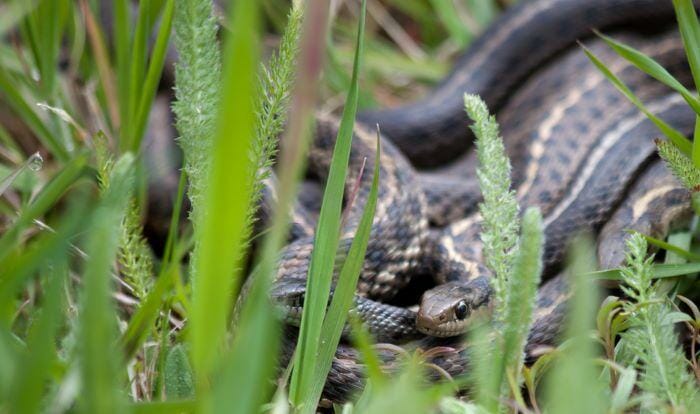
Snakes in the yard or garden are a common occurrence for California homeowners.
If you see a snake in your yard,confirm that the snake is nonvenomous before taking action. When in doubt, contact Smith's for professional, safe snake removal.
If you can confirm that the snake is nonvenomous, here are a few approaches to try:
1. Spray it with a hose
Drench the snake from a distance. This will encourage it to move along, without harming it. Be aware, however, that this is only a temporary solution, and the snake may return.
2. Trap the snake
If you've contacted a pest removal service and intend to have the snake removed that day, you can trap it with an overturned garbage can. Again, only attempt this if you are certain the snake is nonvenomous.
3. Eliminate food sources
Snakes eat frogs, birds, rodents, insects, and even fish. If you have any of these animals on your property, eliminating them will help resolve your snake problem.
4. Get rid of standing water
Standing water sources like rain barrels, birdbaths, and ponds attract snakes. To prevent snakes from coming back, remove these sources of standing water.
5. Trap the snake
Use a store-bought snake trap to humanely trap and secure the snake. Once you've caught the snake, take it to a safe location far from your home to release it. Again – only attempt this if you are sure the snake is nonvenomous. Glue boards are a good option for humane snake removal. The glue board traps the snake without harming it. To release the snake from the trap, simply pour some vegetable oil over the snake's body to neutralize the glue.
6. Fill burrows
If you have old gopher holes or other burrows on your property, fill them with gravel or dirt to prevent snakes from using them. If there are many burrows, reach out to a pest management company that specializes in burrowing pest control – such as Smith's – to eradicate gophers, moles, and voles.
7. Remove shelter
Remove sources of shelter for snakes, including coiled hoses, firewood piles, tall grass, dense brush, and open areas under sheds and outbuildings. Keep grass cut to 1" or shorter, and ensure all snake-proof fencing is flush with the ground, angled outward, made of steel mesh or plastic sheeting, and at least 3 feet high and 4 feet deep. You can also plant snake-repellent plants, like marigolds and wormwood.
8. Use smoke
Snakes are sensitive to smells, including smoke. As such, digging a fire pit and allowing it to smoke for several days is an effective way to drive snakes off your property.
9. Consider natural predators
Cats, foxes, raccoons, turkeys, pigs, and guinea hens are natural predators of snakes. Having these animals on or around your property is an effective natural way to keep snakes at bay. You can also purchase store-bought fox urine to use as a natural snake repellent.
10. Use natural repellents
Natural repellents including sulfur, clove and cinnamon oil, and vinegar may help repel snakes. Pour these substances around the perimeter of your property, any place you have noticed snake activity.
11. Call a wildlife control company
Dealing with a snake problem can be overwhelming. Sometimes it's easier to let a professional wildlife control company like Smith's take care of the issue for you.
How to Get Rid of Snakes In the Basement, Crawl Space, or Under the Porch
To get rid of snakes in the basement or crawl space, or under the porch, use all the same tactics as you would to remove snakes from your yard.
Set up mouse traps to remove rodents (or call Smith's for a rodent control plan), remove shelter sources like storage boxes and shelving, and place store-bought snake repellent pellets around the opening to the crawl space, or in the corners of the basement.
The smell of the snake repellent will deter snakes without harming them.
How to Get Rid of Snakes in the Chicken Coop
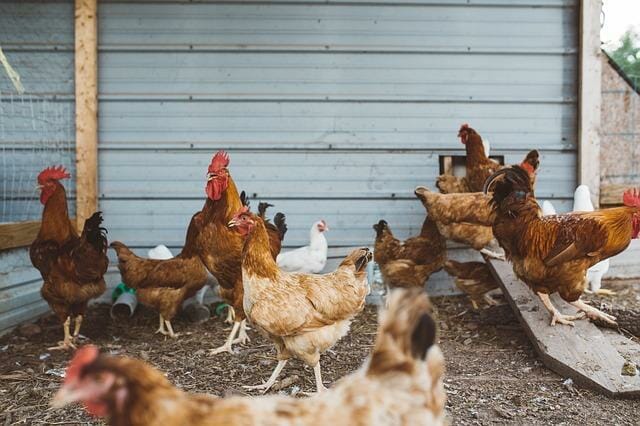
Snakes in your chicken coop can pose a real problem. In addition to the fact that most snakes will eat chicken eggs, a chicken coop provides hiding spaces for a snake, making it difficult to remove them.
To get snakes out of your chicken coop, address the underlying problems. For example, if you have mice in your coop, snakes will follow. It's also smart to cut grass, move debris piles, and trim any bushes near the coop.
Finally, collect all eggs frequently and consider making amendments to the coop – like raising the floor, installing snake-proof fencing, or adding an apron to the coop.
How to Get Rid of Snakes In the Garage
Garages are the ideal habitat for snakes – they're cool, dark, and usually easy to access thanks to small gaps around most garage doors.
To get rid of snakes in your garage, the key is to make it unpleasant for them.
Place snake repellent in the corners of the garage, or any place you've noticed snake activity. Remove pet bowls and other sources of standing water, and contact Smith's if the problem persists.
How to Get Rid of Snakes by the Pool or in the Pond
If you have a water snake by your pool or around your pond, ammonia is an excellent home remedy to consider. The smell of ammonia is powerful enough to deter snakes.
For best results, soak rags in ammonia and place them in unsealed plastic bags anywhere you've noticed snake activity. Change them daily for the best results.
Additionally, cut grass and trim back brush around your pond or pool to make it more difficult for snakes to access.
Contact Smith's for professional snake removal if the problem persists.
Do Natural Snake Repellents Actually Work?

Common store-bought snake repellents are easy and safe to use.
They work by interfering with a snake's sense of smell and deterring them from nesting in your outdoor space. While store-bought snake repellents tend to be effective, natural or homemade snake repellents have a spottier track record.
Here are a few natural snake repellents to be aware of. While they may be effective in some cases, there's no hard science to back them up:
Naphthalene
Naphthalene is an ingredient in many commercial snake repellent products. If you want to save money, you can purchase pure naphthalene and place it anywhere you've noticed snake activity.
Sulfur
Powdered sulfur may be an effective ingredient to repel snakes. Since powdered sulfur irritates a snake's skins, it makes your property an unattractive place for them. The smell can be irritating, though, so be sure to wear protective clothing.
Clove & Cinnamon Oil
Clove and cinnamon oil emit strong scents and may deter snakes. For best results, mix them in a spray bottle and spray them any place you've noticed snake activity.
Garlic & Onions
Garlic and onions contain sulfonic acid, which may be effective to repel snakes. Mix chopped-up garlic and onions with rock salt and sprinkle the mixture around your home and yard to deter snakes.
Ammonia
Ammonia emits a strong odor that may deter snakes. Use ammonia-soaked rags in plastic bags and place them any place you notice snake activity. Replace them daily.
Vinegar
Standard white vinegar can repel snakes around bodies of water, including swimming pools. Pour straight white vinegar any place you've noticed snake activity, such as the edges of ponds and pools.
Lime
Lime mixed with hot pepper or peppermint oil may help deter snakes. Mix the ingredients in a glass bottle and pour the liquid around the perimeter of your home or garden.
How do Wildlife Control Specialists Get Rid of Snakes?
Wondering how to get rid of snakes fast? When you work with the team at Smith's for professional snake removal, here are the steps we will take:
1. Inspection
When you contact us about a snake problem, we'll visit your property for an initial inspection.
During this inspection, we'll examine your property for signs of snake activity, identify the species of snake, and make an abatement and exclusion plan.
We take a holistic approach to snake removal and focus on a combination of tactics – including habitat modification and food source reduction – to remove snakes.
2. Treatment
During the treatment phase, our expert snake removal specialists will use commercial-grade snake repellents to create exclusion barriers around your property. This prevents snakes from returning.
Our repellents are effective enough to keep snakes away, but safe enough for the whole family – including kids and pets.
Finally, we'll address underlying issues that could be attracting snakes, including invasive pests, small rodents, and more.
3. Follow-up and Monitoring
Here at Smith's, we believe we do not need to capture or kill snakes to get rid of them.
Instead, we can eliminate their food sources, apply repellent to their hiding areas, or use exclusion methods so that there is no good place for these reptiles to hang around.
Getting rid of rodents like gophers, rats, ground squirrels, and voles is also a good way to keep snakes away. As long as we can make your property unsuitable for snakes, they'll go away on their own.
When you work with our team, we will provide professional advice on how to create an unfavorable habitat. We also provide ongoing repellent services – including full home and yard pest management plans that takes care of all pest species.
How to Keep Snakes Away from Your House
To keep snakes from coming back, follow these prevention tips:
- Replace grass or mulch with gravel. Snakes can't move or hide easily on gravel and other hard surfaces.
- Remove bird feeders, birdbaths, and other sources of food and water. Food and water sources attract snakes and their prey – mice, rats, and insects.
- Keep pet food inside. Feed pets indoors to deter rodents and snakes from gathering outdoors around an easy food source.
- Trim bushes and trees. This keeps snakes from climbing trees or using your landscaping as shelter.
- Reconsider water features. While ponds or fountains are beautiful landscaping elements, they can also attract snakes to your yard or garden and provide nice secret hiding places.
- Install snake-proof fencing. Thin fencing that sits just above or below ground is an effective way to keep snakes and small creatures from entering your property through multiple entry points.
Snake-Proofing Your Yard: 3 Snake Prevention Myths
When it comes to snake control, there are a few myths to be aware of.
Myth 1: Mothballs keep snakes away
This is an old wives' tale, and studies dating back as far as 1985 can prove it. Mothballs have little impact on snakes, and will not prevent them from entering your property.
Myth 2: Snakes can't climb trees or fences
Snakes are avid climbers, and can easily scale a tree or fence to access your property.
Myth 3: Pelletized lime will keep snakes away
Like mothballs, lime has little impact on snakes and will not keep them off your property.
Are Snakes Invading Your San Francisco Bay Area Property? We're Here to Help!
Here at Smith's Pest Management, we provide comprehensive and humane snake control and removal services to residential and commercial properties in Northern California – from Marin to Monterey. Contact us today to learn more or to book your snake removal service now.
How To Get Rid Of Snakes In My Wall Garden
Source: https://smithspestmanagement.com/blog/post/how-to-get-rid-of-snakes/
Posted by: jonesvoill2001.blogspot.com

0 Response to "How To Get Rid Of Snakes In My Wall Garden"
Post a Comment